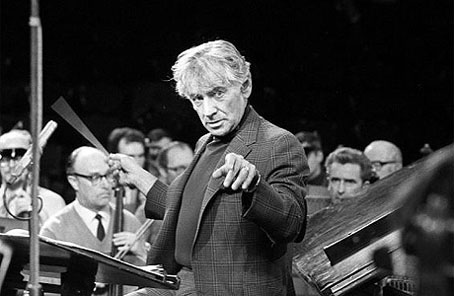
He directs his players in a few examples, bits of Beethovens Ninth and Schuberts Eighth Symphonies, Prokofievs Peter and the Wolf, Waldteufels Skaters Waltz. Then he ups the ante, showing how these simple gestures, with subtle modification, are used to coax a fluid, lyrical performance; a playful reading; or an urgently dramatic interpretation from an orchestra.
For 48 minutes, this young conductor Leonard Bernstein, caught on film in 1955 brings you into the musicians world, talking about how tempo, dynamics and phrasing express a conductors feelings and beliefs about a piece, and how that expressivity affects a listeners perception of the music. And he offers you a glimpse of his preparation for a performance.
Take this opening bar of the Brahms First Symphony, he says, and then conducts it. There are 55 notes in it, being played by 100 instruments, and the conductor has to know them all, or he has no right to ascend the podium in the first place. And this is only one bar out of 1,260 in this symphony.
Even with hundreds of cable channels to choose from today, the likelihood of running into a show like this is slim. But in the 1950s, when American television viewers had three major networks to choose from CBS, NBC and ABC classical music was a part of the standard programming mix. Bernstein's conducting demonstration was one of seven appearances, now on DVD, that he made on Omnibus, a 90-minute program that offered segments on science and the arts, particularly music and theater. It ran from 1952 to 1961, and migrated across the networks, from CBS to ABC in 1956, and to NBC in 1957.
For a Bernstein fan, this set of appearances, just released by E1 Entertainment (on four DVDs), is a landmark in the development of Bernstein's public persona. Having become a household name after his celebrated New York Philharmonic debut in 1943, when he filled in at the last minute for Bruno Walter in a performance that was broadcast (on radio) nationally, he had not yet written most of the music for which he is known, including West Side Story, and he did not take up the directorship of the Philharmonic until 1958, the year of his final Omnibus appearance.



























